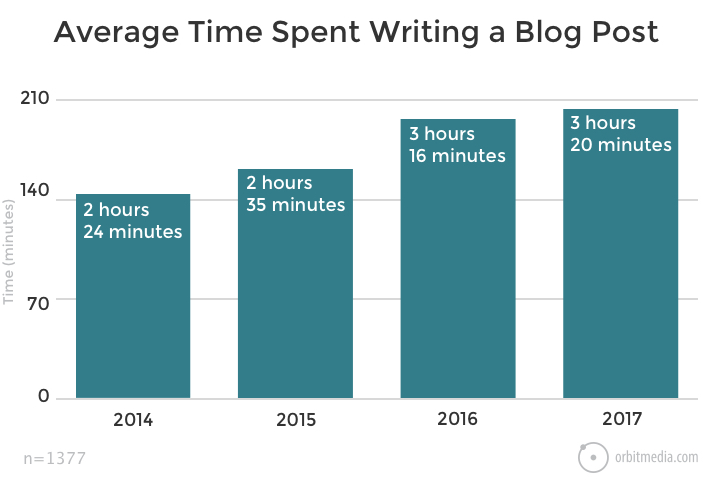The 6 Most Effective Steps to Writing a Blog
Rachel von Holle, Sara Petrozziello, Caleigh Carlson, and Richard Chachowski
February 16, 2018
When writing a blog post, make sure you have enough content to captivate your audience. This is the most important step because it draws people in and entices them to read your material. If they like it, they may return to read another article. Eventually, you can build a loyal following that visits your page regularly.
(In the graph below, the views of a blogger are shown over time. Essentially, understanding your audiance can help you promote your blog to the right crows and grow the reader base.)
You need to make sure you have a starting point so that your ideas can stem from there. This helps in Step 4, which is organizing your content. Your topic can be broad or specific, as long as you are sure to touch upon all relevant points of it. Additionally, a ‘Working Headline’ should be used as your title here. This is because it’s not required to be your final headline or title. It is merely to describe your content simply, and for your own convenience. To find your final headline use the tried and true method of, “Number or Promise + Trigger Word + Adj. + Keyword + Promise.”
The intro is basically the “hook” of the essay, this is what people scan over quickly to see if they’re at all interested in your blog. It draws the audience into your writing, and makes them want to continue to read. Hopefully, if you do this correct then your blog is officially interesting.
Organization is an essential part of a blog post or web page. The content should be organized in a way that flows, so that the reader does not get lost in the content of your page. A strong blog is simple to follow, and captivating in its elements. The images used should make sense so that they support the text and flow of the blog. Planning your posts before publishing is another important way to ensure the organization of the page makes sense both visually and textually.
At this point in the process, you can begin putting your thoughts down onto the virtual page. It is important to organize your content clearly, so the audience can understand the points you are trying to make. In addition, you should get your ideas down on the page. You will be able to fix your mistakes as you go along. In this step, you need to make sure that you leave the audience with a residual message. When they finish reading, think, “What do you want your audience to think, feel, or believe?” Mainly, there is only one thing that your readers will take away from a blog, and it’s up to you to make sure you can control what they do take from your writing. This can be done through declaring your residual message forcefully, and not suggesting or saying it as a question. You can also use certain action verbs to explain what you want your audience to feel.
(Show below is a graph of how long, on average it takes to write an effective blog post.)
Once your blog post has been completed, the next and final step in your process is to look over and edit what have you written. It is important to edit out and eliminate any mistakes or elements that do not fully add to your blog post before it is published. Do all the images and visuals work where you placed them? Is your blog post organized in the best and most coherent way possible? Is your text completely free of any and all mistakes? This last step is crucial in the writing process, as you are essentially cleaning up your work and preparing it to the best it can for publication.






Leave a comment
You must be logged in to post a comment.